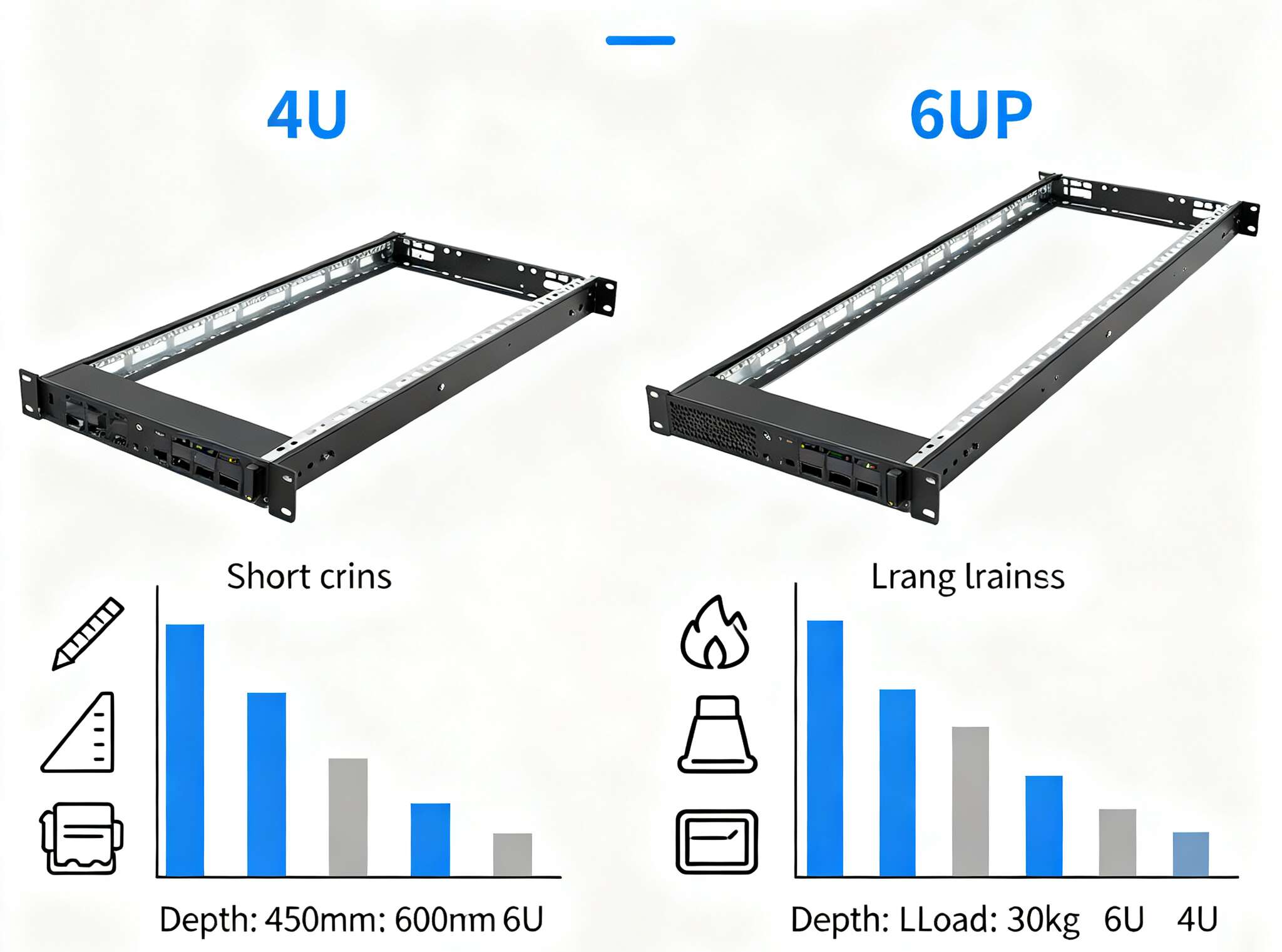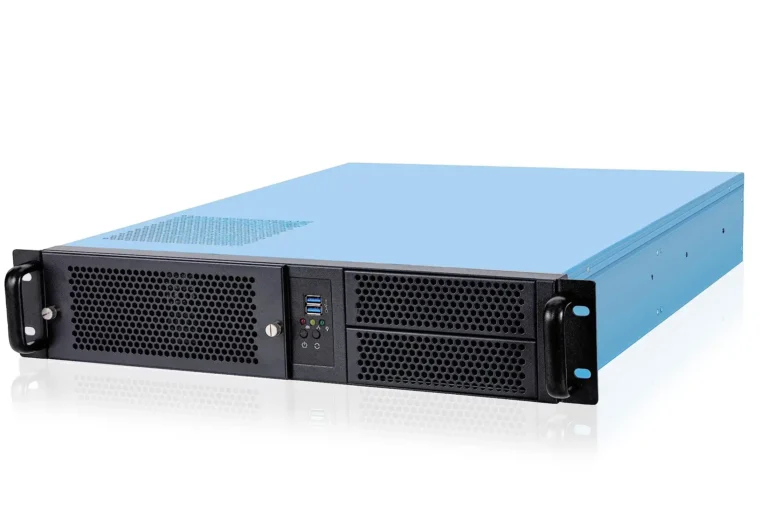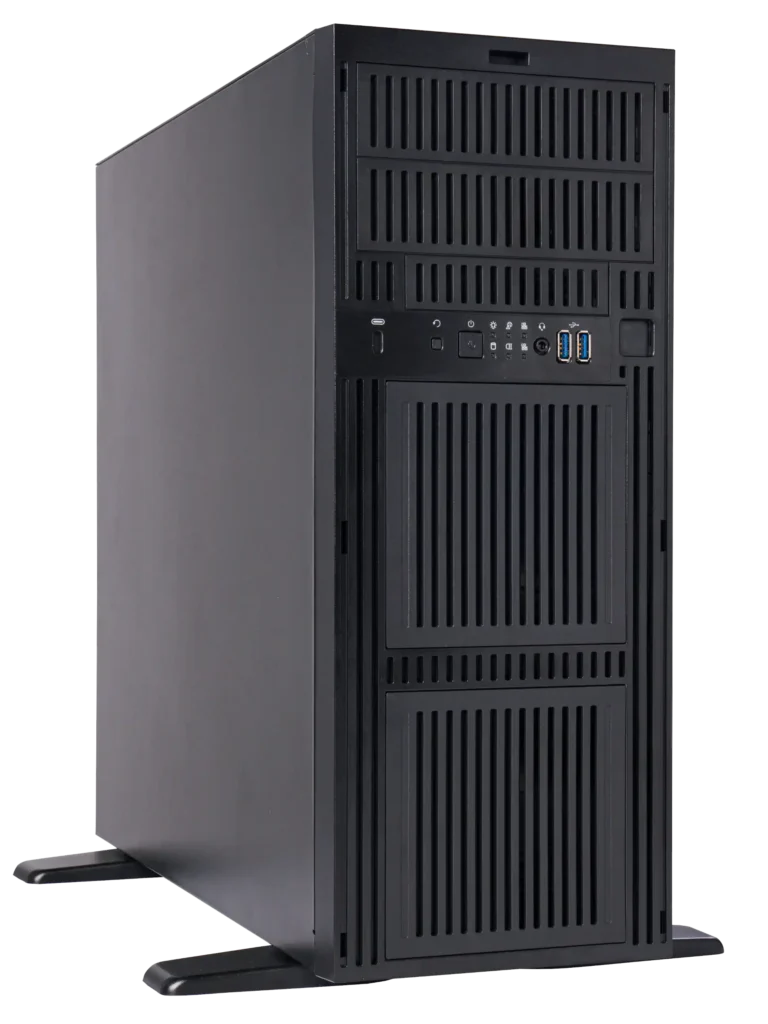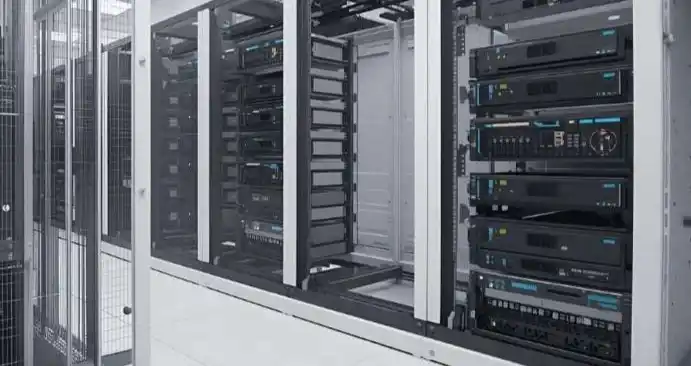You’ve got a 4U or 6U box on your desk and a rack waiting in the server room. The only thing between you and a clean install? Rails that actually fit. Let’s keep it simple, keep it real, and make sure you don’t end up with a pretty server pc case you can’t mount.
EIA-310 19-inch rack basics (standard & spacing)
If the rack isn’t EIA-310 compliant, rails turn into a guessing game. EIA-310 defines the 19-inch width, the hole pattern, and that 1U = 1.75 inches. Your 4U or 6U height doesn’t change the rail standard—it just changes weight and clearance. Think of this like lanes on a highway: the width is fixed, your truck might be taller or heavier.
Why it matters: rails are designed around post spacing and hole layout. If the spec matches, rails usually play nice.
Rack rail depth (front-to-rear post distance)
Measure the inside distance between the front and rear posts (post-to-post). Not the outside of the cabinet. Most rail kits list an adjustable depth range—your number needs to land inside that range. If you’ll use a cable management arm (CMA), check the “with CMA” depth too. CMAs eat depth like candy.
Quick tip: write the depth on painters tape on the rack, saves you trips back and forth. Yea, tiny hack, but it works.
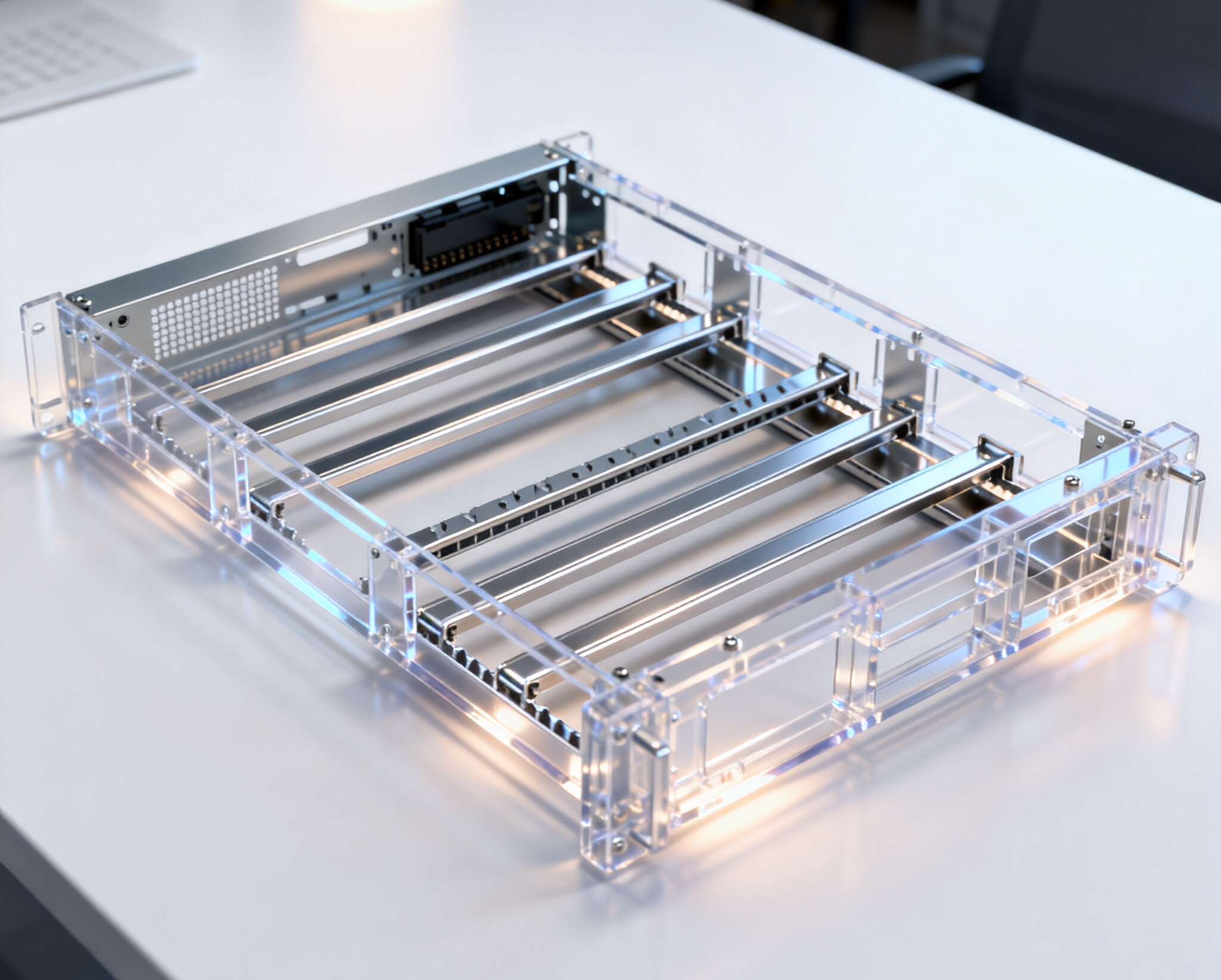
Square-hole vs round-hole vs tapped-rail (and cage nuts)
Hole type drives install method and hardware:
- Square-hole (most four-post racks): tool-less “snap-in” rails or cage nuts. Fast swaps, painless service.
- Round-hole (sometimes two-post telco or older racks): often needs bolts and sometimes spacers; watch front offset.
- Tapped-rail (threaded, e.g., 10-32 / 12-24 / M5 / M6): use the right screw, don’t strip it; some “tool-less” rails won’t work here.
Pain point we see a lot: installing tool-less rails into round-hole posts can pull the chassis slightly forward. If your door is tight, leave extra clearance up front.
4U vs 6U server rack pc case (weight & front-door clearance)
U-size doesn’t change the rail interface, but it changes mass, handles, and how far the faceplate protrudes. A 6U computer case server loaded with HDDs and heavy GPUs is no feather. Ball-bearing slide rails help you service it without a balancing act. Also check door and bezel clearance—bigger faceplates need space to swing.
Rules of thumb:
- Rails’ rated load ≥ chassis weight × a safe buffer.
- Leave breathing room for front filters, bezels, and finger-friendly handles.
Ball-bearing slide rails vs fixed L-brackets (plus CMA)
- Slide rails (ball-bearing): smooth pull-out, great for hot-swap and fast field service, usually CMA-ready. For dense storage, GPU servers, or anything you’ll touch often, this is the go-to.
- Fixed L-brackets: simple, sturdy, budget-friendly. They don’t slide; you support the chassis during service. Perfect for gear that rarely moves.
CMA (Cable Management Arm): keep cables dressed while you slide the server out. It’s neat, but it does add depth and a little airflow complexity. Don’t over-pack the cables in the swing.
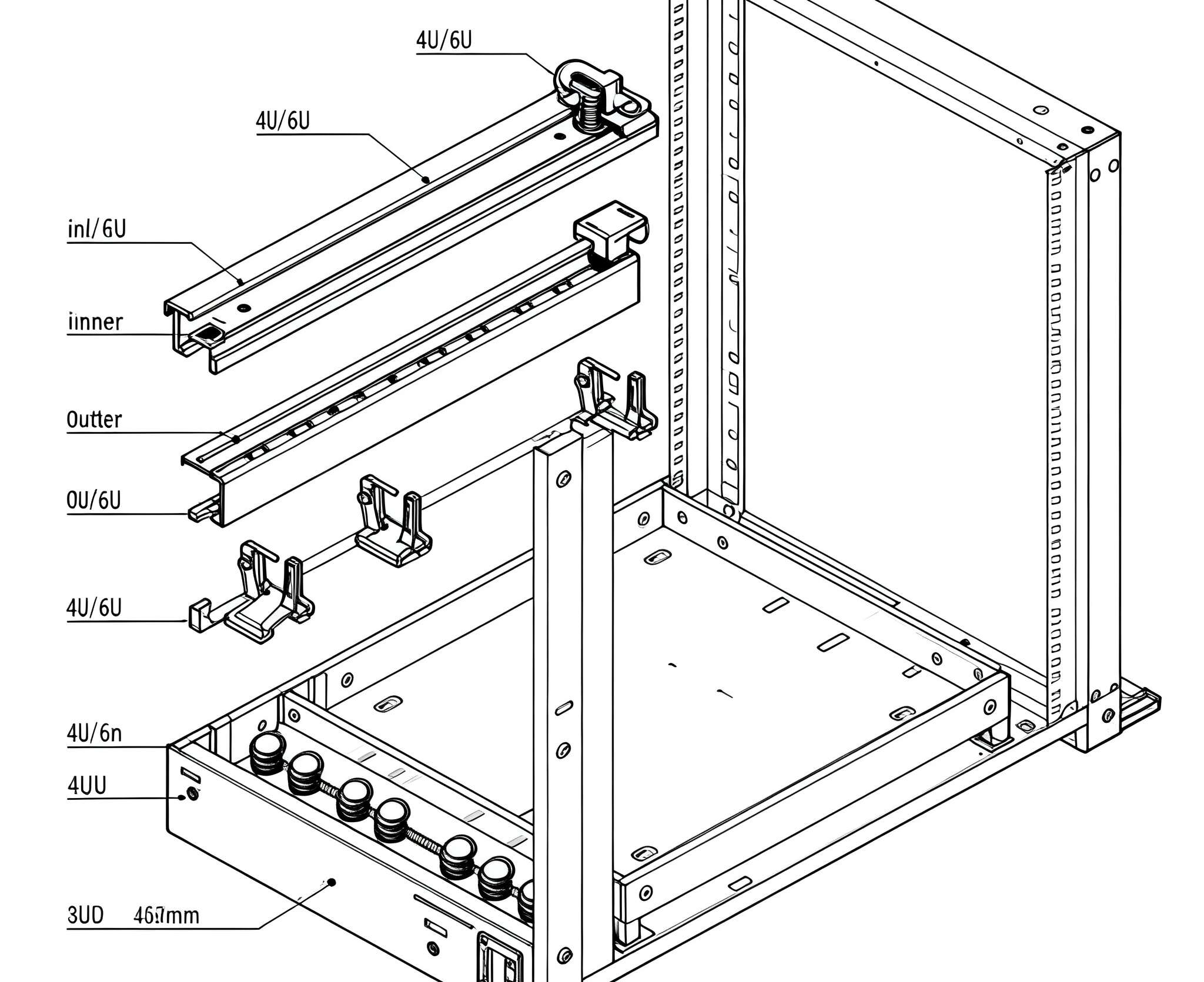
Brand-specific rail kits vs universal rail kits
- Brand-specific rails: clean fit, often tool-less, and matched to the chassis. The downside? Less flexible across racks, and availability varies by series.
- Universal rails (L-shelf / adjustable): wider compatibility, support square-hole, round-hole, and tapped posts with the right hardware. Check the min–max depth and the vertical alignment of slots; some “universal” rails aren’t truly universal (we all learned that once).
Service reality: in mixed-vendor racks or co-lo cages, universal rails save the day. In standardized racks, brand-matched rails are nice and fast.
Compatibility checklist for a server rack pc case
Use this like a pre-flight before you add to cart.
| Factor | What you check | Target / Range | Notes | 4U vs 6U impact |
|---|---|---|---|---|
| Standard | EIA-310, 19-inch width | Must match | Keeps hole pattern predictable | Same |
| Post spacing | Front-to-rear post-to-post | Inside depth within rail’s adjustable range | Add extra if using CMA | Heavier 6U may prefer longer rails |
| Hole type | Square / Round / Tapped | Known upfront | Choose tool-less vs screw-mount accordingly | Same |
| Load rating | Rail capacity | ≥ chassis weight × buffer | Heavier builds need ball-bearing rails | 6U more critical |
| Door clearance | Faceplate + handles | Leaves safe gap | Filters/bezels need space to open | 6U often deeper bezels |
| CMA support | Yes / No | Works at your depth | Adds length; confirm bend radius for cables | More weight at full extension |
| Service model | Slide vs fixed | Based on ops habits | Slide for hot-swap; fixed for “set-and-forget” | Bigger gear = slide preferred |
Real-world scenarios (what actually happens in the field)
Data center refresh
You’re standardizing multiple server rack pc case models. Square-hole four-post racks? Go tool-less slide rails with CMA to speed rollouts. Order extra cage nuts for vendors that need them. Label depth on each rack upright; techs move faster.
AI/GPU lab
A 4U atx server case stuffed with dual-slot GPUs gets heavy, fast. Pick ball-bearing rails rated well above the final mass. You’ll slide this box a lot—don’t fight friction. Leave slack and bend-radius room in the CMA for thick GPU power leads.
SMB back-office rack
Mixed equipment, tapped rails in an older cabinet. Universal computer case server rails with screw kits save the week. No CMA? Tie cables along the vertical PDUs and keep a service loop. It’s not fancy, but it’s reliable.
Edge/branch closet
Shallow cabinets bite. Verify the rail’s minimum depth and check that your 4U server pc case plus connectors won’t collide with the rear door. Sometimes a short fixed shelf beats a too-long slide rail. Dont over-tighten screws into thin posts.
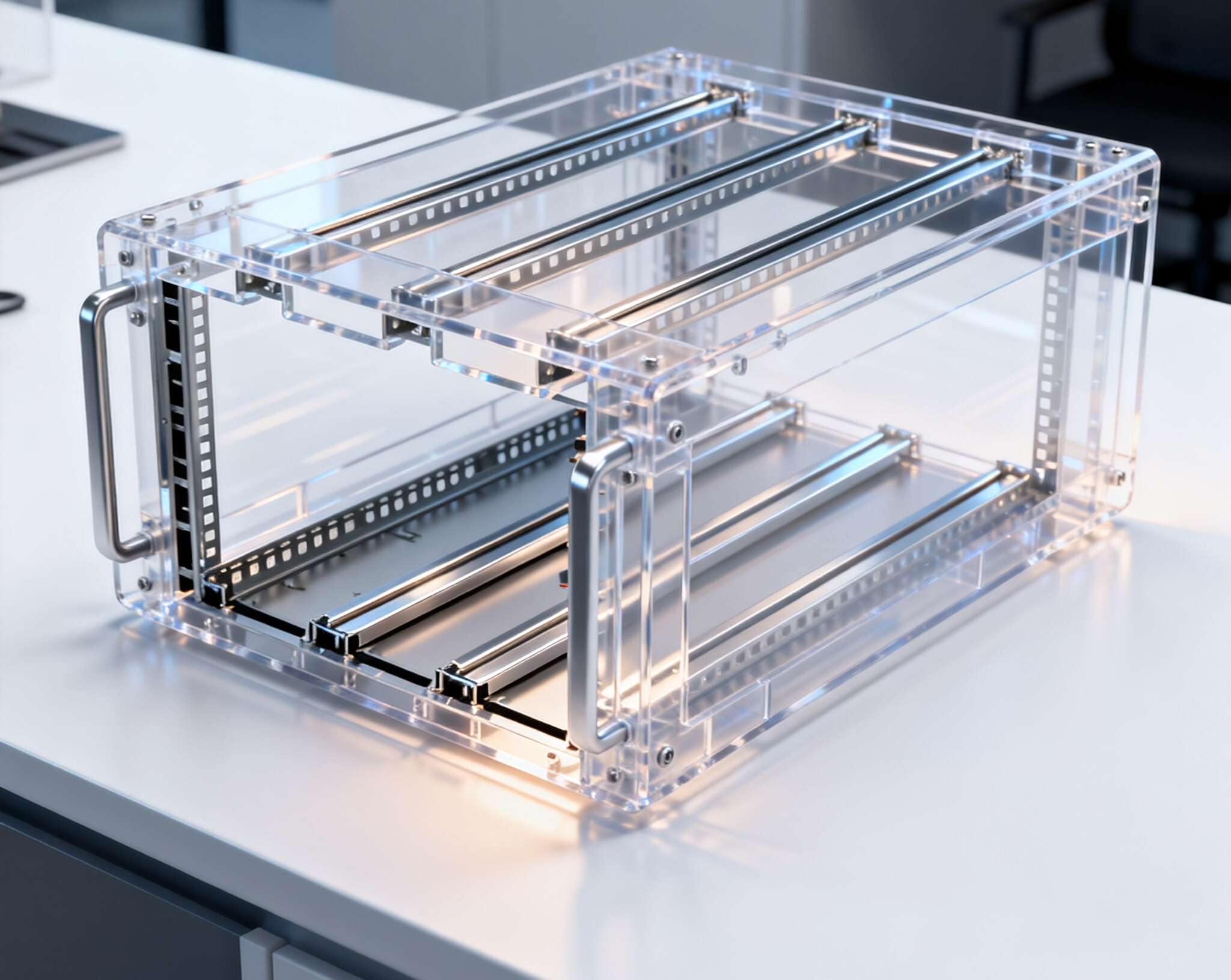
Where IStoneCase fits (options you can actually buy)
You don’t pick rails in a vacuum. Rails should match the chassis and the job. If you’re browsing platforms:
- Browse Rackmount Case when you want the broad view across sizes and mounting styles for a server rack pc case lineup.
- See 1U Rackmount Case and 2U Rackmount Case for compact builds, short-depth racks, or edge deployments.
- Check 3U Rackmount Case if you need more airflow or card clearance for a computer case server with taller coolers.
- For heavy storage or GPU rigs, 4U Rackmount Case pairs well with stronger slide rails and a CMA option.
- Need something off-menu—odd depth, tapped-rail hardware pack, or a specific Chassis Guide Rail kit? Tap Customization Server Chassis Service. IStoneCase builds OEM/ODM kits for bulk orders, datacenters, research labs, and partners who live on SLAs.
IStoneCase—The World’s Leading GPU/Server Case and Storage Chassis OEM/ODM Solution Manufacturer—ships high-quality server rack pc case, server pc case, atx server case, and matching rail kits. We serve data centers, algorithm teams, enterprises, MSPs, and developers who need scale, not drama.

